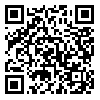BibTeX | RIS | EndNote | Medlars | ProCite | Reference Manager | RefWorks
Send citation to:
URL: http://journal.muq.ac.ir/article-1-1184-en.html
2- Department of Medical Emergencies, Faculty of Paramedical Sciences, Qom University of Medical Sciences, Qom, Iran.
3- Department of Pediatric Dentistry, Faculty of Dentistry, Tehran University of Medical Sciences, Tehran, Iran.
Background and Objectives: Adequate access to oral and dental health services in childhood can reduce long-term complications in the following years of life. The objective of this study was to determine the barriers of access to children’s oral and dental health services from the point of view of mothers referring to health centers in Qom city.
Methods: In this cross-sectional study, the statistical population included 325 mothers referred to health centers. Data were collected using a questionnaire consisted of items, including age, educational level, job, and barriers of access to oral health services. Data were analyzed using descriptive statistical indicators and logistic regression test.
Results: In this study, lack of insurance coverage for dentistry costs (59.7%) had the highest frequency in barriers of access to dental health services, followed by child's fear of dentistry (53.2%) and high costs of dental services (49.8%). There was no significant relationship between mother's job and barriers of access to dental health services, but the chance of barriers of access to dental health services increased 1.60 times with father’s employment in government jobs. Also, the results showed that the chance of barriers of access to dental health services increased 3.60 times with residence in Pardisan region, on the other hand, the chance of access to the services, was improved up to 52% with residence in Tohid region.
Conclusion: Expansion of insurance coverage of oral and dental health services and increase of public centers providing dental services can be eliminate the major part of barriers of access to these services. In addition, the proportional distribution of these services in different regions of the city can be effective in easy and low-cost access.
Received: 2016/09/22 | Accepted: 2017/01/28 | Published: 2017/07/19
| Rights and permissions | |
 |
This work is licensed under a Creative Commons Attribution-NonCommercial 4.0 International License. |







